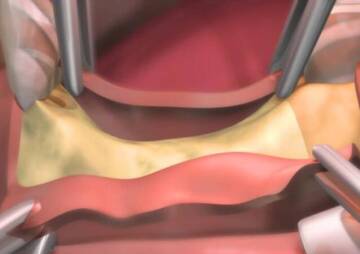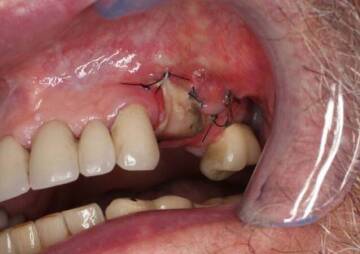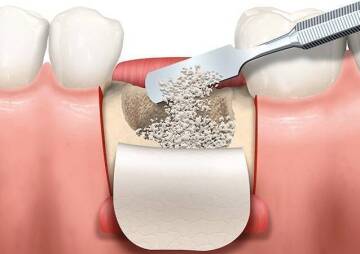-
Category
Craniomaxillofacial Surgery
Orthopedic Surgery
Spine Surgery
Orthopedic Implants
Hip Surgery
Knee Surgery
Pectus Excavatum
Bone Graft
Disinfectants
Healthcare
What is bone graft?

The most recent method of repairing bone tissue is a bone graft or bone graft.
The human skeleton has a remarkable ability to regenerate itself after injury. This unique self-healing power is only in the adult human liver. Bones are revived with different shapes, sizes and resistances exactly as they were before the injury.
However, sometimes the conditions for spontaneous bone repair are not provided. That is why doctors try to help heal fractures with techniques. Methods such as keeping bones steady with plaster or splints. Nevertheless, the latest method is bone grafting or bone transplant.
In this paper, bone graft, its usage, its different types and possible risks will be examined.
What is a bone graft?
The skeleton is composed of bone matrix that helps the bones resist. Inside the matrix are living bone cells that create and stabilize it. The cells in this matrix can help repair and heal bones if necessary.
When the bones are damaged, the cells begin to regenerate the bone. If the injury is minor, self-healing is easily done. However, in certain circumstances, it may not be possible to self-repair alone, for example, if a large part of the bone is broken, healing is not possible without a bone graft.
Bone graft or bone transplant is a type of surgery to fix problems with bones or joints. This helps both bone growth around implants (such as a replacement knee) and the structural stability of the damaged bone area and accelerates healing.
In a bone graft, the graft may be taken from the person's own bones (pelvis, legs, or ribs) or from a donor, or it may be completely artificial.

Why is bone graft used?
Bone grafts are used in the following cases:
Treat multiple or complex fractures and cases that do not heal after initial treatment
Spinal Fusion Surgery
Bone defects caused by infections, osteonecrosis, trauma, tumors, benign cysts and birth abnormalities
To heal bone around surgically implanted devices, such as joint replacements, plates or screws
Types of bone grafts
Bone grafts or orthopedic bone powder help to fully heal bones by creating a new bone. There are different technologies for bone graft that differ in their materials and applications.
In general, bone grafts are performed biologically (naturally) or artificially.

Biological bonds
There are three common methods for natural transplantation. Autograft, allograft and xenograft.
Autograft
In autograft, surgeons use the person's own bone for transplantation. In this method, there is no factor for the immune system reaction or transmission of the disease and the documentation confirms its complete success.
However, autograft has some flaws. Pain and risk of infection at the site of transplant removal and the need for surgery and anesthesia in several stages are among the problems of this procedure.
Allograft
Allografts use donor bone, which is usually dead. Because they contain active proteins, they stimulate the body's cells to form bones. This method is used in graft surgeries and based on documentation in most cases it has positive results.
However, in allograft’s procedure, there is some risk of transmitting the disease to the recipient's transplanted body and the healing process is limited spontaneously.
Xenograft
Xenografts are a type of bone powder taken from a cow's bone. Usually, immune system reactions to xenograft transplantation are more common than other normal transplants.

Artificial grafts
If the graft material is manufactured, they are called artificial grafts or artificial bones. These materials increase the volume of bone used in transplantation.
Artificial grafts are readily available and widely used in surgeries. On the other hand, since they are not taken from the human body, there is no risk of transmitting the disease to them.
View Products: Artificial Bone Graft

However, despite their benefits, they alone do not have proteins that stimulate bone cells to regenerate, and should be used alongside natural ingredients. Artificial grafts have a limited ability to heal large injuries and usually remain part of the transplant recipient's body for years.
Artificial bonds have different types based on their manufacturer materials
Hydroxyapatite
Hydroxyapatite is the main mineral of bone builder. It is composed of calcium phosphate and is what makes bones and teeth harden. Using this material, the artificial bone is made in 3D, spongy and with pores.

Calcium sulfate
Calcium sulfate, also known as Paris gypsum or gypsum, is an inexpensive product with a bone-like structure. Doctors usually use it to support other grafts because it is absorbed quickly.
Calcium sulfate is used in hand surgery and fractures that are not properly transplanted.
Tricalcium Ceramic Phosphate (TCP)
This type of bone graft has different types that are used in fractures that are not well bonded, long bone fractures, cranioplasty, hand surgery, treatment of knee osteoarthritis and dentistry.

Bioactive glasses
These materials create a strong bond with bone tissue and do not cause inflammation. However, since they are fragile, they are not widely used and are mostly used in dentistry
Growth Factors
Growth factors are an injectable transplant that is naturally made of bone protein with the help of genetic engineering. This protein called bone morphogenic protein is an important factor in bone repair and growth and is typically found in small amounts in the body.
Injectable transplants are commonly used in reconstructive surgery because they do not have a risk of transmitting the disease, in most researches the results are declared positive and large bone injuries are healed.
Of course, this type of transplant should not be used for patients with active infection at the site of injury, pregnant women, people exposed to chemotherapy, radiotherapy, steroid therapy and people with immune deficiencies.

Polymer-based transplants
Polymer-based transplants will not strengthen bone growth, so they are not very effective in bone grafts. However, they are used in certain cases such as compressive fractures, spinal tumors, osteoporosis, hemangiomas, bone infections and cranioplasty.
The best bone grafting method
The type of transplant depends on factors such as the type of surgery performed, age, medical history, quantity and quality of the bone. Physicians recommend the best method according to the patient's condition.
How is bone graft performed?
When the doctor chooses the most appropriate method of transplantation, the patient will be given general anesthesia.
After cleaning the affected area, the surgeon makes incisions in the skin and muscle around the target bone.

If the surgery is autograft, it is necessary to make another incision in another part of the patient's body, such as thighs, ribs or pelvis, to remove the transplanted bone. Then the desired graft is removed.

The doctor inserts a bone graft between two pieces of bone that must grow together. Screws, plates and other related tools are sometimes used to stabilize the graft.

When the surgeon ensures that the graft is firm, he closes the incision site with sutures and bandages it.
Plaster or splints are commonly used to help the bone heal faster.
Bone grafts and their risks
Bone grafts, like all other surgeries, have common risks such as bleeding, blood clots, infection and reactions to anesthesia. In addition, complications such as pain, swelling, transplant infection, nerve damage, transplant rejection, and inflammation can also be seen in bone grafts.
Summary of bone grafts
A bone graft is a type of surgery in which a piece of real bone or artificial bone is attached to the part of skeleton that needs to be repaired. Cells inside the new bone can attach themselves to the old bone. These cells and stimulants in the transplanted fragment stimulate old osteoblasts (bone-building cells) and repair faster and more completely. Bone grafts are divided into several categories based on the type of graft material. Autografts, allografts and xenografts are natural compounds. There are also artificial materials used in grafts.
Bone grafting has rare side effects and is a common surgery recommended by doctors according to the patient's condition.
Health News Center offers a variety of artificial bone graphite that has the highest standard level. If you would like to learn more about this product, be sure to check out our products.
Source: medicalnewstoday






